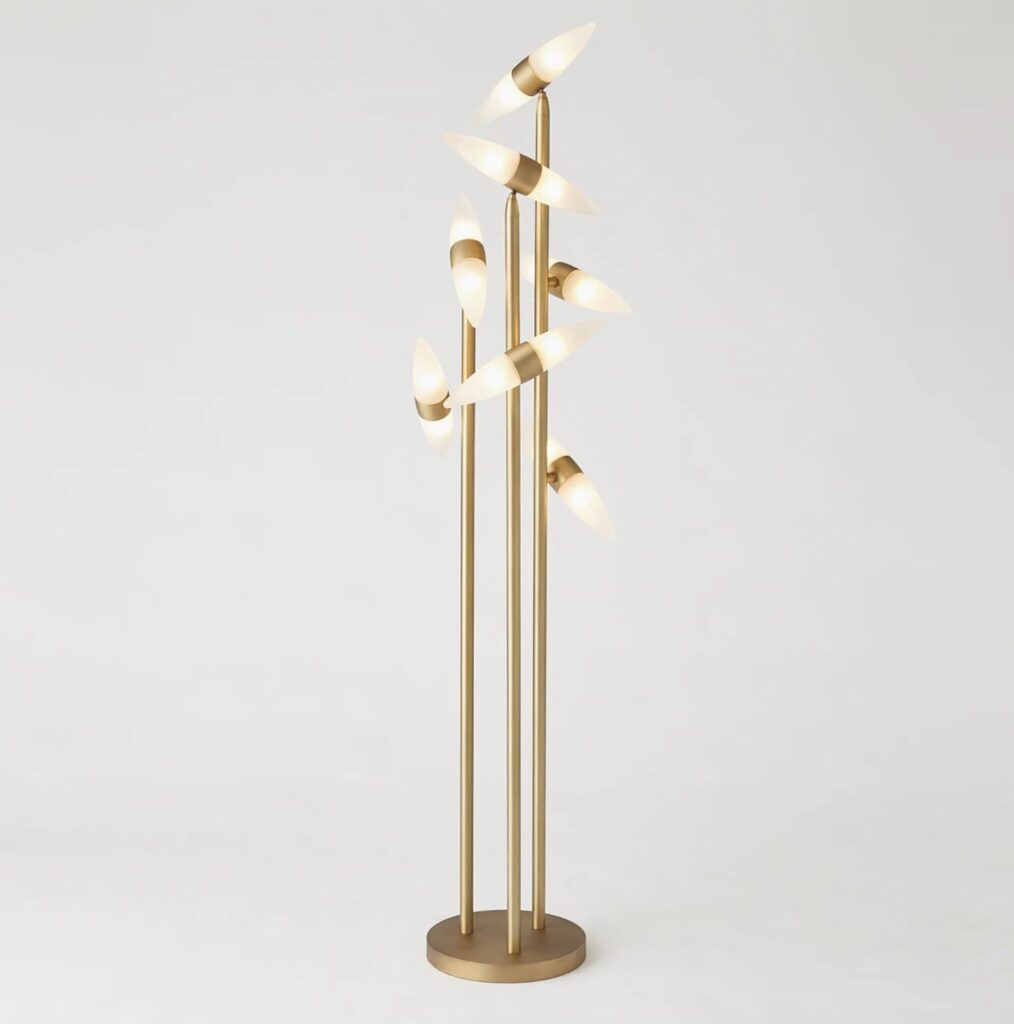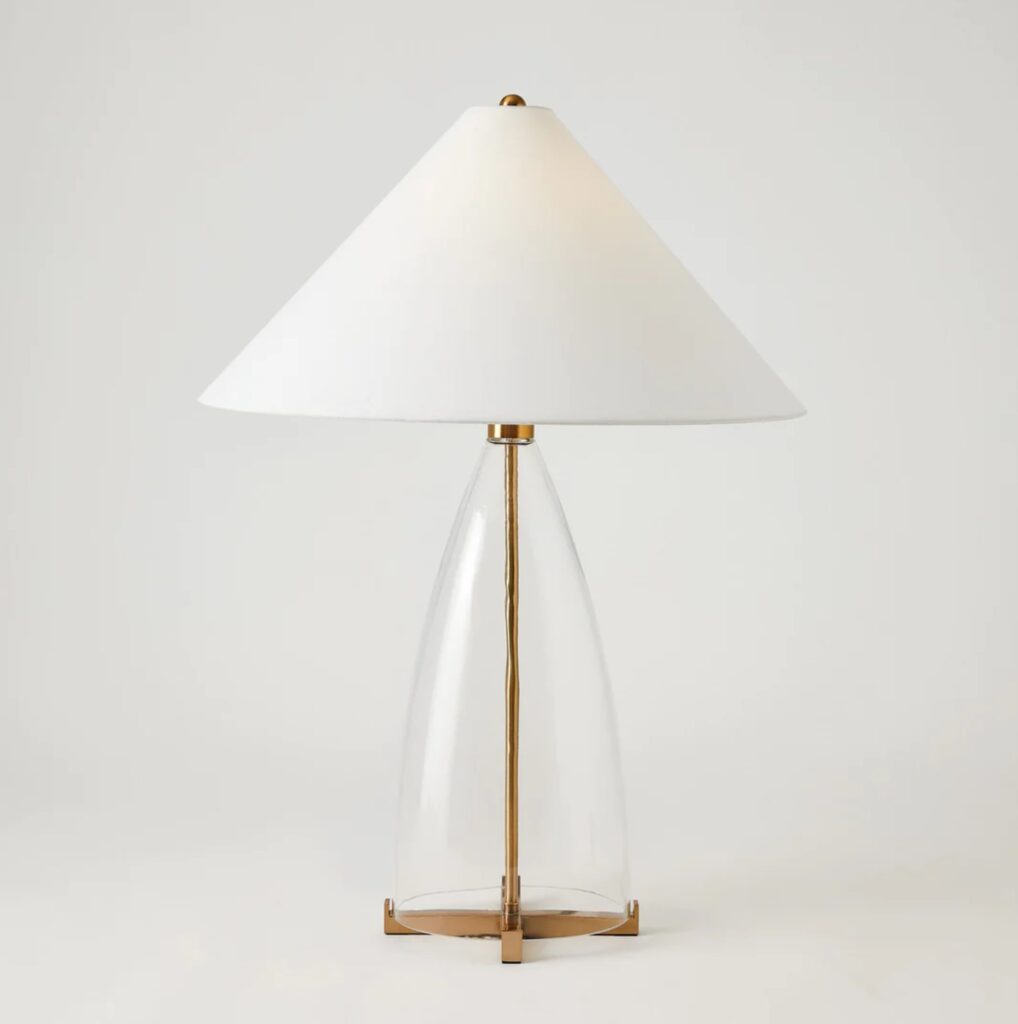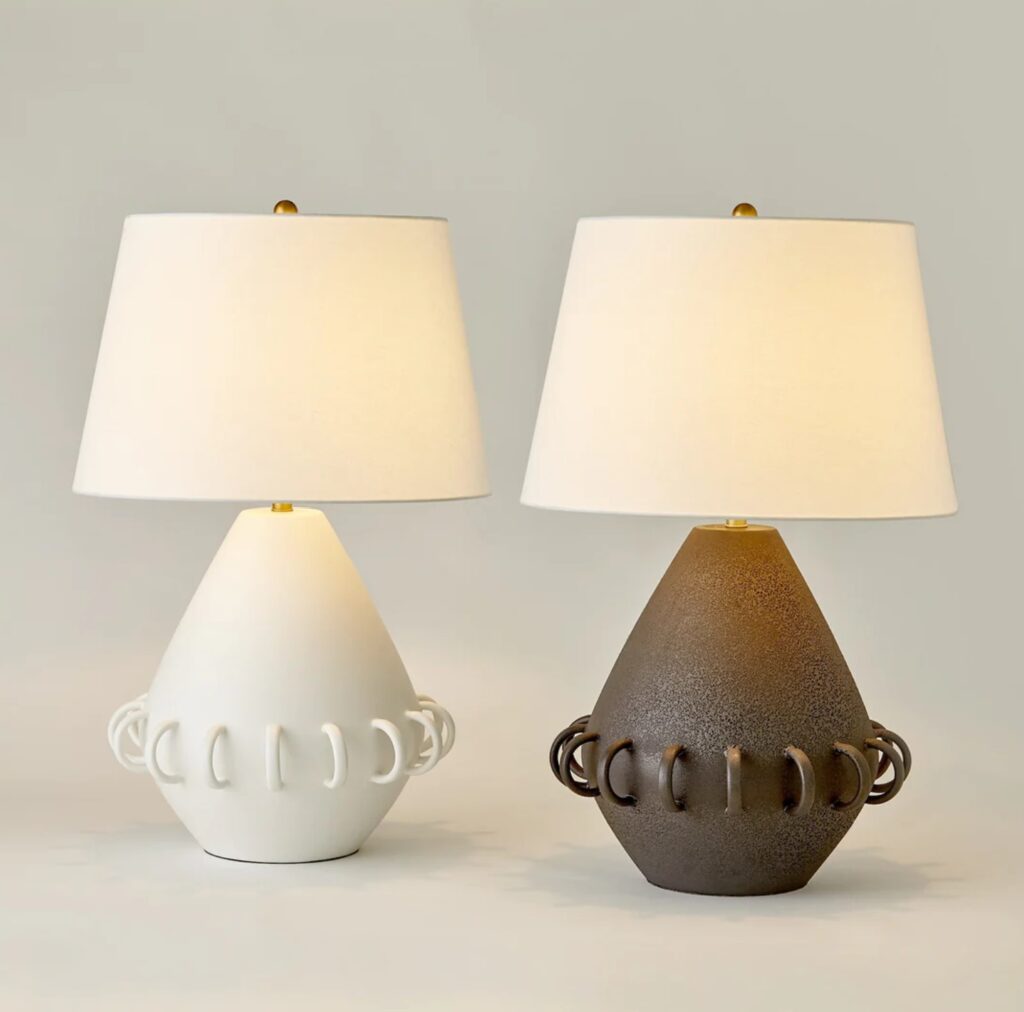How to Choose the Best Fixtures for Each Room
I’m so excited about today’s blog because it’s all about lighting design for your home! I’ll share how to choose the right fixtures for each room. Plus, pro tips on the best heights to hang lighting. The differences between incandescent and LED fixtures, and even how to choose a lampshade like a designer.
Lighting design has a very special place in my heart. Because I first started out in the design industry by launching my lighting and furniture company. For almost 15 years, I’ve been designing lighting collections. Traveling to factories all over the world to have my designs developed and manufactured. So, you could say I know a thing or two about lighting, and now you’re going to get a master class in lighting design!
Lighting Design: Chandeliers & Pendants
Let’s get right to it. The first on our list of Lighting design secrets is how to choose the right chandelier or pendant for a room. First, let’s discuss the differences between a chandelier and a pendant and when you should use each one.

Generally, chandeliers are larger than pendants and tend to have multiple arms or components to their design.
We suggest going for a chandelier-style fixture when you need to make a bold statement, like over a dining table or as the centerpiece of a room. And we love using a unique style chandelier to add visual interest and set the tone of a space.
Pendants are usually a single shape or form and tend to be smaller in size than a chandelier.
I generally design chandeliers that are more modern in style, but honestly, I love all styles, and some of my very favorite chandeliers we’ve used in clients’ homes are vintage and antique pieces.

The important thing to remember is to choose a fixture that’s a reflection of your personal style. Plus, don’t be afraid to mix a contemporary chandelier in a more traditional room or vice versa. By using a vintage piece in a more modern space. The tension that contrasting styles create is interesting and unexpected, two things we always love to achieve.
Chandelier Sizes & Heights
So for tips on chandelier sizes, I like to follow a general rule of thumb. For over a table, a chandelier should be around 2/3 the diameter of the table if it’s round. Or 1/2 to 2/3 the width of the table if it’s an oblong or rectangular shape.

Since most dining tables are around 30” high, we usually like to hang the chandelier at a minimum of 68-72” from the floor.
This allows enough clearance over the top of the table so the chandelier doesn’t get in the way when you are setting the table or enjoying a meal.
So many fixtures that I design are actually adjustable, so you can create the composition you want by adjusting the various arms or components of the chandelier.
You want to keep in mind the ceiling heights as well. Making sure there is plenty of clearance to walk under the chandelier and not hit your head. We like to keep the bottom of a chandelier off the floor at a minimum of 8ft. Even higher if the ceilings are vaulted!

When designing large great rooms, we like to also use multiple of the same chandelier for visual interest and symmetry. If installing a chandelier in a smaller room with lower ceilings or in a media room. You don’t want the chandelier too low or obstructing the view. We like to go with a lower profile style and install it very close to the ceiling. This provides a functional and modern look.
The Lighting Guide

We’ve created a FREE comprehensive lighting design guide for y’all, where we are sharing all our very best designer secrets on choosing and installing lighting. It’s literally the Ultimate lighting guide. Make sure to grab yours on the left! It will save you so much time when choosing lighting for your home!
Lighting Design: Types of Light
Before we move on to pendants… I want to go over a few things to keep in mind when choosing a chandelier. First, check to see if the chandelier is standard wiring and uses bulbs (incandescent or LED) or if it has integrated LED components.
Let me explain a bit. A fixture with integrated LED components means the lighting components are a part of the fixture; they are small little pieces called diodes run by an LED driver, which is a mechanical box that generally sits in the ceiling canopy of a chandelier.
If you are considering an integrated LED fixture, and you want the ability to dim the fixture, you need to check the technical specifications to be sure that the fixture comes with a dimmable driver… because unlike standard fixtures… a wall dimmer will not work on an integrated LED fixture unless it has a dimmable driver.


For chandeliers that you install lightbulbs in, the sockets are all compatible with both incandescent and LED bulbs, and as long as you purchase dimmable bulbs, you are good to go.
There’s no driver in these types of fixtures, so they all work with a standard wall dimmer switch…Whew… I know that was technical, but the difference between Standard and LED fixtures is a question I get over and over again, so consider yourself an expert now!
Pendants
Next, lighting design for your home that is extremely common is pendants. As I said before, pendants are usually a single form and smaller than chandeliers. We use them over kitchen islands, smaller breakfast tables, bathrooms, hallways, and entries.
The all-important kitchen island pendant is probably the MOST loved lighting fixture in our entire home… so let’s talk about how to choose and hang pendants like a pro!
First, when choosing a pendant to go over a table, I usually like to scale it to between ¼ and ½ the diameter of the table and hang it 68-72” from the floor at minimum.

When choosing and installing pendants over a kitchen island… we suggest installing them where the bottom of the fixture is between 36”-42” above the countertop. If you are doing multiple fixtures, two or three over the island, we like to hang them 40-50” apart, depending on the size of the island.


For hallways, bathrooms, and entries, be mindful of hanging pendants high enough that any adjacent doors won’t hit the fixture as you open them.
We like to generally keep pendants in these areas at least 7.5ft off the floor, and if you have 8-foot doors in your home, a minimum of 8.5ft if the pendant hangs close to the door.
Sconces
Now on to sconces. I absolutely love using wall sconces to add charm to a home. Or to highlight art and bring visual interest to a feature wall. Sconces also add another horizontal lighting level to a room, which always results in a welcoming space.
When choosing sconces, make sure you decide on what type of installation you need. Hardwired, where the wiring is directly attached to a junction box in the wall, or cored, where you plug the sconce into an outlet. Both are beautiful, so let’s break down when to use each.
For hardwired options, we use these in kitchens, bathrooms, dining rooms, hallways, and even bedrooms. Depending on the ceiling heights and size of the sconces, we usually install sconces that are on a feature wall in a dining room or entry where the bottom of the sconce falls anywhere between 48-60” from the ground.
Now I know that’s a large range, but the sconce size really plays a role here, so if it’s a long cylinder-style sconce, the bottom would end up being closer to the ground.

For bathrooms and above furniture, we generally like the bottom of the sconce to fall between 18-28” above the countertop. Depending on the size and shape of the sconce. We also love using picture lights when we can highlight art.
These add so much drama to a room. So for a picture light, we usually make sure that it’s installed between 8-12” above a piece of art. I’m also a huge fan of the swing arm and articulated sconces for their beauty and functionality.

For corded styles, we like using these styles beside a bed or in a reading nook. They’re a bit more nostalgic looking, so we really only use corded styles when we are going for that look. And for hardwired swing arm and articulated sconces, we use them anytime we need the functionality of adjustable lighting.
Lamps
Now on to one of my favorite lighting designs for your home. This one adds so much visual impact to a room, and that’s lamps! I have a deep love for lamps of all shapes, sizes, and styles.

I love antique lamps, super modern lamps, table lamps, floor lamps, buffet lamps… honestly… every single kind. Lamps add that last layer of lighting for your home and provide task and ambient lighting to a room.
Let’s start with table lamps. How to choose them, and what shades work best. I want to begin with what I call a large body lamp. These are substantial in size and have an overall shape that is full. They are generally ceramic but can also be made of wood, glass, or metal. If possible, I like to place at least one or two “full body” lamps in a room because they really pack a visual punch.

Lamp Shades
When choosing a shade for this type of lamp I generally lean toward a drum, empire, or conical-shaped shade. Drums are, as you would expect, completely cylindrical or slightly tapered towards the top. Empire shades have even more of a tapper towards the top. They’re a classic option to pair with a full-body lamp style. And a conical shape has the most dramatic tapper of them all and is more unique, which I love!

Now, in addition, to the overall shape of the shade, there are all sorts of details to consider as well. Like the edge. A rolled edge is going to give you a more clean, more modern look, as opposed to a tape edge. That will lean a bit more classic. For pleated style versus a flat fabric shade. The pleated is going to be a more traditional look, but I love a good pleated shade.

Lastly, when shopping for shades I want you to take a good look inside of them. Is the inside of the shade lined in fabric? Generally, that’s a sign of a higher-end shade. The lampshade structure is usually made out of a material called styrene. It’s a rigid plastic that the fabric is affixed to. But, the addition of fabric on the inside can affect the color of the shade once the lamp is turned on. So be sure to put the shade on a lamp and turn it on before purchasing if you can. Although I like to use different types of shades in a room… I don’t want one shade to give off a super yellow cast if all the other shades are more white.
Metal shades can also be fun. Just remember that the light will only come out of the bottom and top of the shade, so generally, lamps with metal shades put off a lot less light than fabric shades. The last pro tip when shopping for a lampshade is to make sure you look at what’s called the lampshade spider. I always like to match the metal finish of the spider to the same metal finish that’s on the socket and harp. It’s a small detail that will elevate your lamp.

Okay, on to buffet lamps and candlestick lighting design for your home. These are usually taller and more slender in shape, and I usually use more elongated shades on these types of lamps. They sit higher, so you generally want to use this type of lamp on a buffet, sideboard, or chest.
As for petite lamp styles, I use these types of lamps tucked into bookshelves, in the corner of a countertop, on a stack of books, or even on a writing desk or vanity to add an element of charm. Lamp shades for these little lamps are generally a candelabra style that clips onto the bulb and can range from woven seagrass to pleated fabric and scalloped styles. These little lamps are meant to be fun, so just go with what you love and add a little whimsy to your room.


Lastly, floor lamps. I am having a huge crush on floor lamps at the moment. And they are BIG in interior design right now. I love everything from grand arching styles to small reading lamps designed to accompany an armchair. Choose a floor lamp that suits your needs and style preferences as with the rest of the lamp styles. And look for unique shapes to compliment your interiors.
Okay, y’all, that was literally a Master Class in lighting design for your home. And I hope it gets you excited and confident to choose lighting for your home! Please let me know in the comments what your favorite lighting tip was!
Shop our Lighting Collection:












If you want to see even more design goodness, watch the YouTube video and take a look at our Pinterest board below.
Designer Secrets on How To Choose the Best Lighting for Your Home YouTube Video.
Lighting Design Pinterest Board
As Always, Thank you for reading, and remember, good design is for everyone. So create a home that inspires you, have fun choosing lighting design for your home, and fall in love with where you live, one room at a time.
XO, Ashley
get the paint guide
Take the guess work out of picking paint colors with our pro paint guide! We're sharing all our favorite colors and our very best designer tips to help you choose the right color every time.
get the guide
Paint
colors
the 2024 best
watch our channel
Looking for design inspiration, pro tips and some of
our favorite resources? Join us on YouTube to get weekly style recommendations, expert design advice, and entertaining ideas.

